GENERAL DATA
Plant parts: Leaves, Flowers
Cultivation mode: Wild collection\Cultivated
In manufacturing: Pharmaceutical, perfumery, hair care, skin care, cosmetic, spice, extract.
In food: Meat, soup, pizza, jam, dessert, tea, sauce.
🌿 Industries That Use Rosemary (Rosmarinus officinalis L.)
It is a highly versatile herb widely used in culinary, pharmaceutical, cosmetic, and industrial sectors. Below is an industry-focused breakdown of its major applications.
1. Pharmaceutical & Herbal Medicine Industry
These leaves are widely used in phytotherapy and traditional medicine for:
-
Anti-inflammatory and analgesic properties
-
Cognitive support – memory, focus, and neuroprotection
-
Digestive aid – relieves bloating, cramps, and poor appetite
-
Antimicrobial – helps treat respiratory and skin infections
✅ Found in capsules, herbal teas, tinctures, extracts, and essential oils
2. Food & Culinary Industry
A classic culinary herb with ancient roots:
-
Used fresh or dried in meat, poultry, roasted vegetables, and sauces
-
Common in Mediterranean seasoning blends (e.g., Herbes de Provence)
-
Acts as a natural antioxidant and preservative in oils and cured meats
-
Infused into olive oils, vinegars, and baking ingredients
✅ Known for its woody, peppery, and slightly minty taste
3. Nutraceutical & Functional Food Industry
This herb is used for health-enhancing food formulations:
-
Incorporated into detox teas, antioxidant blends, and cognitive tonics
-
Used in nootropic supplements for focus and mental clarity
-
Added to functional beverages, immune shots, and nutrient powders
✅ Key in formulations for brain health, longevity, and cellular protection
5. Fragrance & Aromatherapy Industry
Its essential oil is prized for its stimulating, clarifying scent:
-
Used in focus-enhancing diffuser blends and meditation oils
-
Found in perfumes, colognes, and herbal room sprays
-
Popular in massage oils for muscle relief and circulation
✅ Emotionally associated with mental energy, clarity, and memory
6. Household & Cleaning Products
Thanks to its strong antimicrobial profile, this leaf is used in:
-
Herbal surface cleaners, disinfecting sprays, and laundry products
-
Natural air fresheners, insect repellents, and candle oils
✅ Contains cineole and camphor—natural antiseptics and deodorizers
7. Animal Care & Veterinary Use
It is used in:
-
Natural pet shampoos and anti-flea sprays
-
Livestock care products for inflammation and skin health
-
Feed additives as a natural antioxidant and preservative
✅ Summary Table – Rosemary (Rosmarinus officinalis) 🌿
| Industry | Common Uses |
|---|---|
| Pharmaceutical & Herbal | Cognitive tonic, anti-inflammatory, antimicrobial remedies |
| Culinary & Food | Seasoning, flavoring, preservative in oils/meats |
| Nutraceutical | Brain-boosting teas, detox supplements, antioxidant drinks |
| Cosmetic & Skincare | Hair growth serums, acne treatments, tonics |
| Fragrance & Aromatherapy | Diffuser oils, perfumes, focus blends |
| Cleaning & Household | Disinfectants, soaps, deodorizing sprays |
| Veterinary | Pet shampoos, herbal feed additives, anti-parasitic care |
🌱 Key Features:
-
Sun-dried or shade-dried rosemary leaves with strong aromatic profile
-
High in carnosic acid, rosmarinic acid, and volatile oils
-
Used across culinary, wellness, cosmetic, and fragrance industries
-
Renowned for its neuroprotective, antimicrobial, and preservative qualities
HARVEST CALENDAR
Feb
Mar
Apr
May
Jun
Jul
Aug
Sep
Oct
Nov
Dec
High-Quality Dried Rosemary Leaves for Wholesale Buyers
ACPFOOD is a trusted dried Rosmarinus officinalis exporter, supplying premium wholesale dried rosemary leaves to global markets. Sourced from select farms and processed with care, our food-grade rosemary leaves bulk meet the highest standards for culinary, medicinal, and industrial use. We offer dehydrated rosemary in large quantities, perfect for spice manufacturers, herbal companies, and natural product formulators. With competitive Rosmarinus officinalis herb bulk price, we ensure cost-effective solutions for your sourcing needs. Choose ACPFOOD for a reliable partner in rosemary herb bulk sale and international export.
To order dried rosmarinus officinalis leaves, please contact us.
About Rosmarinus Officinalis
It is a perennial and fragrant shrub with many branches that reaches two meters in height. The young stems of this plant are green and the older stems are woody, hard and grayish. The leaves of this plant are small, elongated, narrow, pointed, and fleshy, growing alternately. In the middle of each leaf, there is a distinct longitudinal groove, and it is darker on the surface of the leaves than below them. Leaves have a bitter and spicy taste and a pleasant aroma.
The flowers of this plant are small, tabular, white with purple spots, sometimes pale blue, and sometimes purple, and they grow on top of its leaves. These flowers are fragrant and slightly bitter and spicy. After the flowers dry and fall, the reservoirs at the end of them remain, which contain four small, brown seeds. The shape of these seeds is almost like an incomplete oval with a quarter of it separated.
To order dried Rosemary, please contact us.
Rosmarinus Officinalis Chemical Constituents
Leaves and flower tops yield 1-2% volatile oil consisting of bornyl acetate, borneol (the chief constituents), cineole and minor quantities of camphene and a-pinene. Also present in the leaves are rosemarinic acid and triterpene alcohols like a-, and b-amyrins, betulins and b-sitosterol.
Rosmarinus officinalis Temperament
Very hot and dry.
Rosmarinus officinalis Health Benefits
Rosmarinus Officinalis leaves
1. Drink leaves decoction. It is tonic, carminative, stimulant, diaphoretic and emmenagogue. It cures asthma, it is useful for relieving heartache caused by bloating, it is effective for treating cancer, paralysis, pertussis, insomnia and general and nervous weakness, it is used for rejuvenation, for relieving chronic moist cough, shortness of breath, cold suffocation and ascites are useful, to relieve cramps and blockage of the liver and spleen, It is also used to treat black bile jaundice, crushing kidney and bladder stones, and increasing urination and menstruation.
Rosmarinus officinalis Side Effects
It is harmful to hot temperaments, it is abortive, pregnant women should avoid it and excessive consumption is toxic.
Rosmarinus Officinalis flower
- Brew 40 to 50 grams of it in a liter of boiling water and drink 3 cups of it a day. It is astringent, analgesic and anticonvulsants and disinfectant of the urinary tract, is a solver for the chest and relieves nervous coughs and nervous irritations, treats intestinal gas, intestinal inflammation and dysentery, if drink it before sleep at night, it eliminates insomnia.
- Drinking 20 to 30 grams of its brewed tea is useful for treating bronchitis and swelling of the back of the throat.
- Its poultice with vinegar and rose oil on the head and eating 27 grams of it with 67 grams of honey is useful for headaches.
🌿 Nutrition Facts – Rosemary Leaves (Rosmarinus officinalis L.)
Serving Size: 1 g (dried leaves, typical for spice or infusion use)
Calories: ~3 kcal
| Nutrient | Amount per 1g | Per 100g |
|---|---|---|
| Total Fat | 0.15 g | 15.0 g |
| • Saturated Fat | 0.01 g | 1.0 g |
| Cholesterol | 0 mg | 0 mg |
| Sodium | 1.0 mg | 50 mg |
| Total Carbohydrate | 0.7 g | 70.0 g |
| • Dietary Fiber | 0.5 g | 50.0 g |
| • Natural Sugars | 0.04 g | 4.0 g |
| Protein | 0.04 g | 4.0 g |
Vitamins & Minerals (Per 100g):
| Micronutrient | Approx. Content | % DV (per 100g) |
|---|---|---|
| Vitamin A (RAE) | ~1460 IU | ~29% |
| Vitamin C | ~21.8 mg | ~36% |
| Calcium | ~1280 mg | 128% |
| Iron | ~29.2 mg | 162% |
| Magnesium | ~220 mg | 55% |
| Potassium | ~950 mg | 27% |
Phytochemical & Functional Profile (Per 100g):
| Compound / Group | Approx. Content | Functional Role |
|---|---|---|
| Rosmarinic acid | Present | Anti-inflammatory, cognitive & skin support |
| Carnosol & carnosic acid | Present | Antioxidant, neuroprotective |
| Essential Oils (cineole, camphor, pinene) | ~1.5–2.5% | Aromatic, antimicrobial, memory-enhancing |
| Flavonoids | Moderate | Antioxidant, cardiovascular support |
| Tannins | Trace–moderate | Astringent, digestive |
🌿 Rosemary leaves are highly aromatic and valued for both culinary use and traditional herbal medicine. They support memory, digestion, and circulation, and are often used in teas, extracts, tinctures, and bath infusions.
⚠️ Due to its potency, rosemary is used in small amounts. Avoid excessive intake during pregnancy or in individuals with epilepsy.
Percent Daily Values are based on a 2,000-calorie diet. Nutrient composition may vary slightly depending on drying and origin.
To order Rosmarinus officinalis leaves, please contact us.



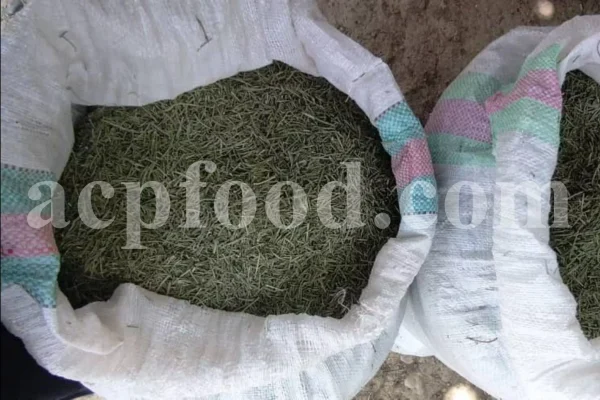




















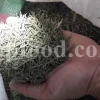















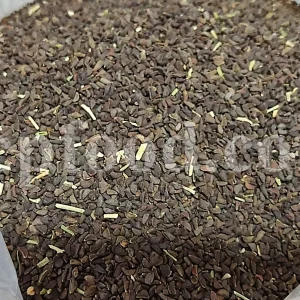

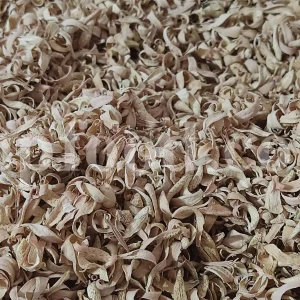
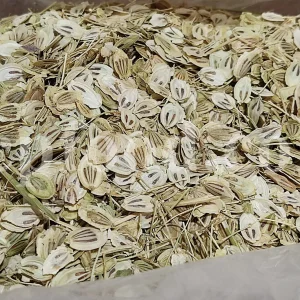
Reviews
There are no reviews yet.